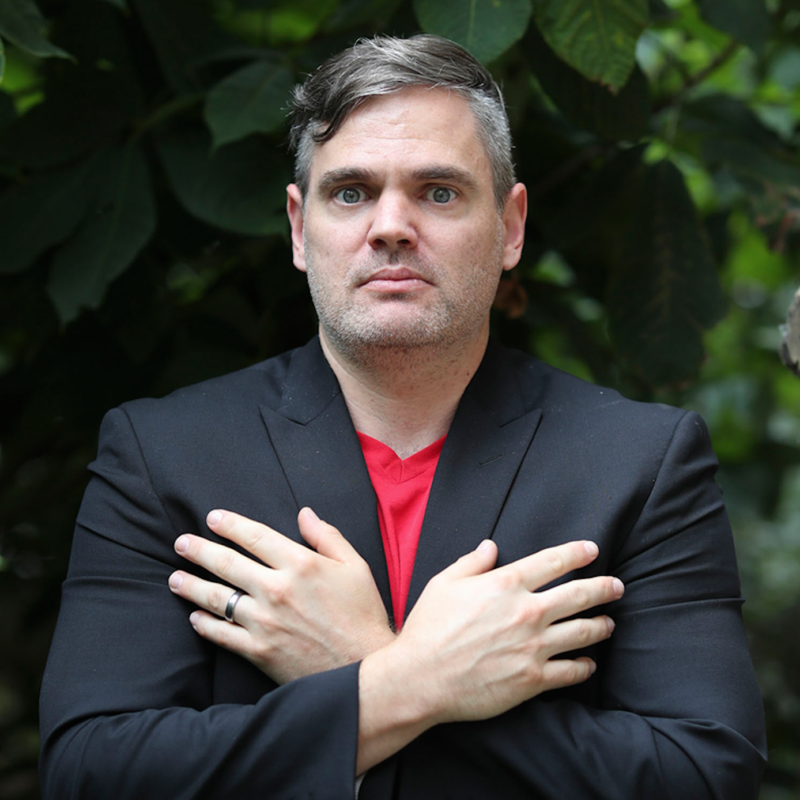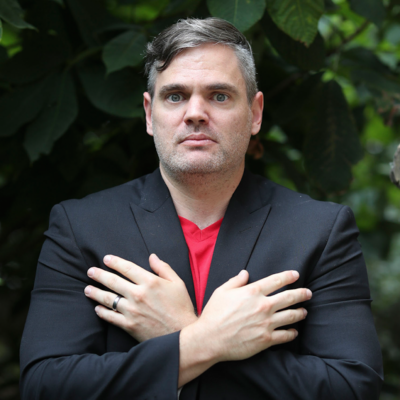A harmony of seemingly unrelated elements pervades the prints, sculptures and oil paintings of UVA art professor Dean Dass. When obscure literary allusions or philosophical references appear among his rich textures and earth tones, they seem as natural as the landscapes and figures at the center of his etchings, paintings and lithographs. Born and raised in bucolic Iowa, Dass received his MFA from Temple University in 1980, and currently teaches the Distinguished Majors Seminar at UVA’s McIntire Department of Art.
)/RI_-IMG_9853.jpg)
The prints, paintings and sculptures of UVA art professor Dean Dass, photographed at Les Yeux du Monde, are on display there through December 31and at Second Street Gallery through December 23.
|
Through December 23, “Studies for a Project that will Never be Realized,” an enormous retrospective on Dass that includes mostly etchings and sculptures, is on display at Second Street Gallery, and through the end of the year, a collection of a new works by Dass hangs at Les Yeux du Monde under the title “Heaven and Earth.”
“The titles of both of my exhibits are terribly pretentious,” laughs Dass. Dressed in black and sipping green tea, he begins, “I’m a big shade gardener. I love ferns. Let’s talk about ferns.”
What initially drew you to printmaking?
I started printmaking in high school. I made highly technical etchings and lithographs, and now I’ve been making prints for over 35 years nonstop. I liked the technicality, the alchemy, the chemistry, how esoteric and mysterious it was. The heavy, heavy process always appealed to me. It’s the same with oil painting too, really very technical. A lot of art is craft, working with the materials, and the materials dominate the process. A former student of mine once said to me, “I’m going to quit printmaking because I never have any happy accidents.” You need those. Interesting things have to happen to you, against your intentions. Otherwise you can’t get anywhere.
At your Second Street Gallery showing, a number of your works are grouped in a corner labeled the “Corner of Shame.” Which is funny, because they seem like the works you might be most proud of.
That’s what it’s supposed to be! I told the story behind that name at the gallery opening and people came up afterwards and asked, “So these are the bad pictures?” No! These are the good pictures! The best pictures! I have a Finnish friend, Outi Heiskanen, who takes all of her best work and puts it in a corner with a little children’s chair. Its hilarious! Like they’ve been sent to time out. So it’s her concept, where you send all the bad pictures until they learn how to behave. Isn’t it hilarious?
Yes! Very unserious.
But there is a serious aspect to it as well. Artists’ studios are more interesting than their exhibitions. Not only is there more stuff, but it’s all there. The studio is the index of everything. And so to do a kind of idiosyncratic installation at Second Street, it looks like my studio, except cleaned up a little bit and hung with a centerline. But seeing everything in one place gets back to the question of “Who made this art?” I was a print artist for a long time, and when I, at age 40, introduced the landscapes in oil to my galleries, collectors would come in and yell at the gallery owner, “What the hell is he doing?” One of my friends thinks I have an evil twin brother who makes the oil paintings. But you know, in the studio you see everything and it’s just seamless. Good pictures, bad pictures, sketches, highly evolved things, piles of pigments. You see the process. A studio is a very interesting place.
Landscape has an important place in your work. Do you find that your surroundings shape your process?
Yes. Everywhere we go we find places that make us believe in primordial reality and places where we feel like we can live in this world without being alienated or estranged from it. Everywhere I’ve traveled, and I haven’t been everywhere, has been like that.
In many of your pieces there is a tension between the natural world and humanity’s attempts to index it.
I’ve made many pieces called “False Garden” or “Outpost.” Very dark landscapes that are very sedimentary. I talk about pigment and the painting process as sediment. That heavy mineral surface. But I abandoned the schematic style of those pieces in the late ’80s. That work came out of living in Philadelphia and being from rural Iowa, just being young and naïve and shocked at civilization. I drew oil refineries and airports. You see mechanical buildings all across the horizon. I was young and naïve enough to find that shocking. I did a lot of really dark work in that period, where the earth is erupting over the schema.
Is that a consistent pattern, that your creation arises from an unsettled feeling of being in the world?
I hope so. It’s called negative theology. You define God by talking about what he is not, or define any sort of meaning by absence rather than presence. So my works from the ’80s, and even into the ’90s, I would characterize as having a negative theology. But I repudiate that work! I renounce that work!
Does your current work have what you might call “positive theology?”
Yes. I really want to be sentimental. I want to be sweet. For one thing, we are going to have a seminar down at the Second Street Gallery, my students and I. In class the students will give a talk about their work and then I will grill them, so we are going to reverse that. It’s going to be really fun. They are going to roast me.
Some of your work has been printed on paper alternative. What was the idea behind doing that?
It was an old linen, my grandmother’s. Linen used to be made of flax. And my grandmother knew that we were making paper at the school and she was collecting old linens for us. But most of them were too beautiful to grind up into paper. And then she sent me some that had some of her hand repairs on them, and oh my God, it was so beautiful. So in the mid-’90s I did entire exhibitions of little works on paper mounted on antique linen donated by my grandmother. It’s so sentimental.
Is the technical process of doing that very difficult?
No. If you were my student I could teach you in 10 minutes. It’s a kind of lamination. Its technical, but we artists love talking about that kind of thing. We love talking shop. How to glue paper to linen so it looks beautiful, we live for that stuff. But you can’t do shop talk outside of the shop. You’ve got to talk about something real that everyone can understand. You talk about ideas. So don’t resist your interpretations. That is all we should talk about.





